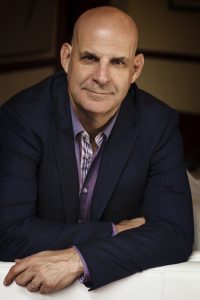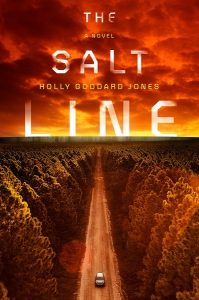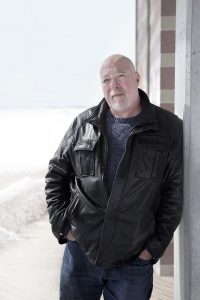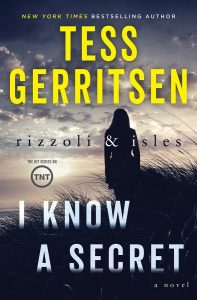Harlan Coben is known to millions of readers around the world. His first novel was published when he was twenty-six, and after two stand-alone thrillers, Play Dead in 1990 and Miracle Cure in 1991, he began writing the popular Myron Bolitar series. His 2001 standalone novel, Tell No One, was hugely popular. In 2006, Film director Guillaume Canet made the book into the French thriller, Ne le dis a personne. The movie was the top box office foreign-language film of the year in the U.S.; won the Lumiere (French Golden Globe) for best picture; and was nominated for nine Cesars (French Oscar), winning four awards.
Harlan Coben has gone on to write many more standalone novels. His books regularly appear on the New York Times bestseller list, and more than 70 million have been sold internationally. He was the first writer to receive the Edgar, Shamus, and Anthony Awards.
Don’t Let Go is told through the eyes of New Jersey Detective, Napoleon (Nap) Dumas, who has been mourning the death of his brother, Leo. His brother, along with Leo’s girlfriend, Diana, was killed years earlier by an oncoming train. At the same time, Maura, the love of Nap’s life, broke up with him and disappeared with no explanation. For fifteen years, Nap has been searching for Maura and the real reason for his brother’s death. As so often happen in Harlan Coben’s novels, events coalesce and an ominous scenario begins to unfold—one more sinister than Nap could ever have imagined.
In an Author’s Note at the start of “Don’t Let Go,” you talk about a legend that circulated in your home town and inspired this novel. Tell us about it.
When I was a kid, there was a wooded area behind an elementary school where a lot of people went, and where teenagers went and did more than just play. There were barbed-wire fences and KEEP OUT signs. Rumor was that it was a Nike missile base with nuclear capabilities. I didn’t really buy into that rumor, but when I was older, I learned it was true. They eventually closed down the base, and I used that as part of the plotline in Don’t Let Go.
Although Nap Dumas couldn’t be described as an “anti-hero,” he has some qualities that are a bit different from many of your protagonists. Will you talk about that?
Most of my protagonists are pretty happy, sociable people, trying to achieve the American dream. They’re usually married with a couple of kids. Nap is a darker character. I didn’t want him to be too dark or an anti-hero, but he’s much more of a loner. Usually, my guys are well-adjusted, but Nap is not. He’s haunted by some of the ghosts of his past, which he’s trying to exorcise in this book.
And he’s not above doing something a bit illegal, is he?
[Laughter]. No, he’s not.
I’ve read many of your books and can’t recall any you wrote in the first person, present tense as in the case of “Don’t Let Go.” Tell us about the different points of view in your storytelling.
I’ve done first person, third person…whatever tells the story best. There’s something about first person, present tense that makes it seem as though Nap is telling this story to a ghost—the ghost of his brother, Leo. It just worked. It felt ridiculously natural. Everyone seems to react enthusiastically to that voice and viewpoint. This is just the way Nap channeled through me. I let him tell his story, and it feels as though the reader is his dead brother, Leo. Also, I think the present tense lends an immediacy to the narrative.
Many of your books have been characterized as “domestic thrillers.” What about this subgenre makes it so appealing?
The domestic element ensures that readers can identify with the story and the characters. People say, “Write what you know” which I don’t necessarily agree with, but the suburban, domestic situation is what I know very well. It may have something to do with the drive toward the American dream—the wish to have a house, two cars, two kids—and an idyllic life. I have a sort of romantic yet skewed vision of all that.
The past plays a prominent role in “Don’t Let Go.” In fact, it’s integral to the story. Will you talk about characters’ backstories in your novels?
It’s the iceberg effect. I know a ton of stuff about a character that I don’t reveal. The hard part when I’m writing, is not to give too much backstory at one time. I drop backstory in on a need-to-know basis, a little bit at a time. First-time fiction writers sometimes write a compelling opening paragraph and then proceed to give page after page of backstory. The novel’s pacing is ruined. Often, less is more. I feel I can do a great deal with dialogue—describing how a person talks, reacts, or feels, rather than writing pages of backstory.
Is there anything about your writing process that might surprise our readers?
I don’t know if it’s a surprise, but I write much faster toward the end of a novel than at the beginning of the book. The last forty pages of Don’t Let Go were written in one sitting, and were barely rewritten. It’s because I knew how the book was going to end from the first day I began writing it. I get so excited toward the end, I end up writing in a frenzy.
What do you read when you’re writing a novel?
At the beginning of my career, I might have been more careful. Now, I read anything because my writing voice is distinct, so whatever I read doesn’t interfere with what I’m doing. I’m not one of those writers who can’t read fiction while writing because frankly, I’m writing all the time. [Laughter].
I understand Netflix subscribers will be able to tune in to something you’ve written.
Yes. Netflix is featuring something called Harlan Coben’s The Five. It was a series that originally aired in Britain, and Netflix is bringing it over for the American and Canadian audiences.
Also, a TV show called Safe is being filmed. It stars Michael C. Hall of Dexter fame and Amanda Abbington from Sherlock.
Another show on Netflix is No Second Chance, a six-part thriller based on my novel.
What’s coming next from Harlan Coben?
I’m working on a new book, but I never talk about a work in progress. Even though I’m dying to tell people about it, I hold back because the only way I get satisfaction is by writing the book. It’s one of the pieces of writing advice I give to people: Don’t talk about your book until it’s done.
Congratulations on penning “Don’t Let Go,” a beautifully-crafted, multi-layered and powerful tale driven by grief, love, guilt, responsibility, searing emotions and everyday truths to which all readers can relate.









